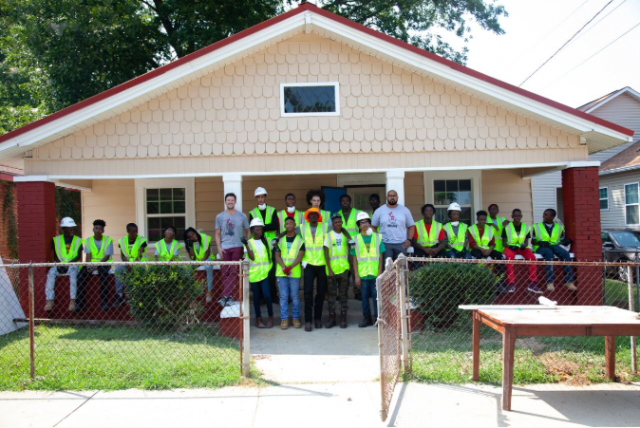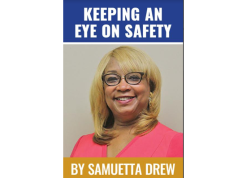
By Tatiana Eaves
In the spirit of the holiday season, the team at the National Wildlife Federation would like to give thanks to all of our Birmingham, Alabama partners and send you all best wishes for the holidays. It’s been a tremendous two years of effort addressing infrastructure, flooding, water, and public health. We are super excited to see what the next year may bring.
In the beginning, when we met former Birmingham City Councilman John Hilliard and his team in 2018, we were blown away by how quickly this friendship blossomed. Councilor Hilliard and his strong willingness to assist the community with environmental justice, welcomed us to Birmingham, put us in touch with several community partners, and the rest in history.
We would like to take this time to mention some of those partners. We met Mark Martin, the creator of Build UP, the first early-college workforce development high school in the country, and during the summer, Build UP students worked with our team at the National Wildlife Federation throughout the community to address local environmental issues. Meeting Mrs. Thomasine Jackson, the president of the East Thomas Neighborhood Association, was incredible as she is a genuine community pillar. Jacqueline Gray Miller stepped in during the onset of the Covid-19 pandemic serving as our Birmingham local lead and storyteller. Ms. Miller provided essential guidance in steering the local partners and our green initiatives. We partnered with Brian Rice as well, who has a mechanical engineering background and a deep desire to use his knowledge and skills to help create sustainability in his community.
Yohance Owens, the former Village Creek Society’s Executive Director, led indispensable work to put the Village Creek Society’s Five-Year Strategic Plan into action. His worked centered around efforts aimed at keeping the creek from overflowing and beautifying the neighborhood. L’Tyrce Slade, Managing Director of Slade Land Use, Environmental, Transportation, and Planning, has shared her science, training, and skills as a licensed general contractor in the areas of environmental services, geotechnical services, building material testing, construction management, and urban planning, among others. Ms. Slade has been instrumental connecting 21 Birmingham youth to summer, green career opportunities.
It was great to meet Garrel Jones, the creator of Pneuma Gallery, Inc., as he has helped create an environment for returning citizens to connect to green career opportunities and directing our summer youth green career efforts. Mr. Jones focuses on reducing violence, recidivism, and family dysfunction while also fostering community.
As we look ahead to next year, we also look forward to working with newly elected city leaders including District 9’s new representative, City Councilwoman LaTonya Tate.
We are also grateful for the gift we’ve received from the Federal government recently: The passage of the Infrastructure Investment and Jobs Act. This Act will provide opportunities to address the issues identified by our Birmingham partners. It provides monumental investments to improve and repair our roads and bridges, deliver clean drinking water to our schools and homes, mitigate the effects of climate change, improve transportation, and create millions of good-paying jobs.
Here are a few investments we are keeping track of for Birmingham:
- $1.2 billion in grants to help states and communities assess, safely clean up, and sustainably reuse contaminated properties such as abandoned steel mills and coking plants.
- $3.5 billion in FEMA flood mitigation assistance grants to support mitigation activities for socially vulnerable or economically disadvantaged property owners.
- $15 billion in grants for communities and states to construct or improve highway and bridges, at-grade rail crossings, intercity passenger rail systems, and public transit systems.
- $3.5 billion in funding for projects that increase energy efficiency, increase health and safety, and reduce energy costs for low-income households.
Our partners are essential to the work that we do at the National Wildlife Federation; these collaborations bring important and mutual benefits to all of our work. As we harness the expertise and resources among community members and combine it with that of our team at the National Wildlife Federation, we are that much closer to forming more viable, resilient, thriving communities and long-term solutions to various environmental issues.




